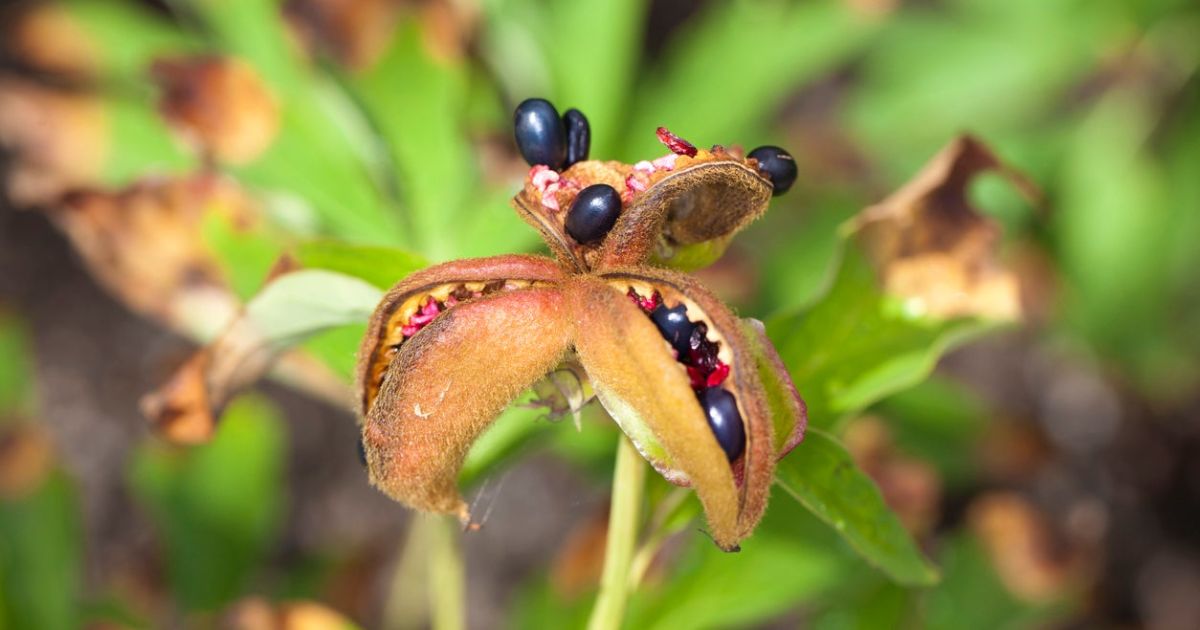Peonies are stunning flowers known for their large, fragrant blooms and vibrant colors. Growing peonies from seeds can be a rewarding experience, but it requires patience and proper timing. Understanding when and how to plant peony seeds is crucial to ensure they thrive and eventually produce beautiful flowers.
The key to successful peony growth lies in planting the seeds at the right time and providing them with the right conditions. By following the correct steps, you can enjoy the beauty of peonies in your garden for years to come.
Read More: When Can I Cut Back Peonies?
Understanding Peony Growth Cycle
Peonies grow best when they are planted at the right time. The growth cycle of peonies is unique. Most peonies bloom in late spring or early summer, and they go dormant during the winter months. Understanding this cycle will help you choose the right planting time for seeds.
You need to give peony seeds time to break dormancy. This process, known as cold stratification, mimics the winter period. Without it, your seeds may not sprout or grow properly. Cold stratification usually requires several weeks of cold temperatures before planting.
The Best Time to Plant Peony Seeds
The best time to plant peony seeds is in the fall. Planting in autumn gives the seeds a chance to experience the cold stratification they need to sprout in spring. If you plant in fall, the cold winter temperatures will help prepare the seeds for successful germination.
However, you can also start peony seeds indoors during winter. If you do this, ensure the seeds undergo cold stratification in the fridge for about 10 to 12 weeks. This mimics the cold conditions they would experience outdoors, preparing them for when spring arrives.
How to Plant Peony Seeds
When planting peony seeds, choose a well-drained area in your garden. Dig a hole about 1 to 2 inches deep and place the seeds inside. Space the seeds about 3 to 4 inches apart to allow room for growth. Make sure to cover the seeds with soil after planting.
If you start your seeds indoors, use small containers or seed trays. Fill them with a good quality seed-starting mix. Plant the seeds about an inch deep and water them gently. Keep the containers in a cool, dark place to allow for proper cold stratification.
Cold Stratification Process
Cold stratification is a crucial part of planting peony seeds. To mimic natural conditions, the seeds need to be exposed to cold temperatures for several weeks. This process helps break down the seed coat, allowing the embryo to sprout when it warms up.
Without cold stratification, your peony seeds may not germinate. To ensure success, store the seeds in a sealed plastic bag with some moist paper towels or peat moss. Keep the bag in your refrigerator at temperatures around 40°F (4°C) for 10 to 12 weeks before planting them.
Planting Peony Seeds Outdoors
If you prefer to plant peony seeds outdoors, it’s best to do so in the fall. This allows the seeds to go through the cold stratification process naturally during winter. Before planting, prepare the soil by loosening it and removing any weeds.
When planting outside, space the seeds properly and cover them lightly with soil. Water the area thoroughly after planting. Peonies do not require much maintenance after they are planted, but make sure the soil remains consistently moist throughout the cold months.
Starting Seeds Indoors
Starting peony seeds indoors is an alternative if you don’t want to wait for fall. Begin the cold stratification process by placing the seeds in a refrigerator for 10 to 12 weeks. Once the cold period is over, you can plant the seeds in small pots or seed trays.
After planting, keep the containers in a cool place with indirect sunlight. Be patient as the seeds may take several weeks to sprout. Once they begin to grow, you can move the seedlings into larger pots or prepare them for outdoor planting when the weather warms up.
Peony Seeds Germination Time
Peony seeds take time to germinate. After the cold stratification period, it may take several weeks for the seeds to sprout. The germination process is slow, so don’t be discouraged if you don’t see results immediately. Peony seeds require patience to grow into mature plants.
Typically, germination happens in early spring or late winter, depending on when you start the seeds. Once the seedlings have sprouted, you can start acclimating them to outdoor conditions. Gradually expose them to sunlight and fresh air before transplanting them into your garden.
Transplanting Seedlings
After your peony seeds have germinated and grown strong, they will be ready for transplanting. The best time to transplant is in the early spring when the soil has warmed up a bit. Choose a location with well-drained soil and plenty of sunlight.
Be gentle when handling the seedlings. Peonies have delicate roots, and any damage to them can affect their growth. Dig a small hole for each seedling, place them in the hole, and cover them with soil. Water well after transplanting and ensure the area is kept moist as the plants adjust.
Challenges of Growing Peonies from Seeds
Growing peonies from seeds can be a bit challenging, especially because of their slow germination process. Unlike other plants, peonies take time to develop and bloom. It might take up to 3 to 5 years for your peonies to produce flowers after planting seeds.
In addition to the long wait, there’s the risk of poor germination if the seeds don’t undergo proper cold stratification. Be patient and ensure you follow the necessary steps to give your peonies the best chance to grow successfully. Over time, your efforts will reward you with beautiful blooms.
Alternative Methods for Peony Propagation
While planting peony seeds is a rewarding challenge, there are faster methods to propagate peonies. Division is a popular method for gardeners who want to get blooms sooner. This involves separating the roots of an established peony plant and replanting them.
Another method is grafting, where a piece of a mature peony plant is grafted onto a rootstock. This method also speeds up the flowering process, and it’s often used by professional gardeners. However, starting with seeds is a more natural way to propagate peonies.
Peony Care After Planting
Once your peony seeds have sprouted and the plants are established, proper care is essential. Make sure your peonies are planted in an area with full sun, as they thrive in bright conditions. They also prefer slightly acidic, well-drained soil for healthy growth.
Peonies don’t require much attention but benefit from regular watering, especially during dry spells. Mulching around the plants can help retain moisture and suppress weeds. If you notice any pests, take steps to address them quickly to avoid damage to your young plants.
Conclusion
Planting peony seeds requires patience and attention to detail. The best time to plant them is in the fall, allowing the seeds to undergo cold stratification naturally. Alternatively, you can start seeds indoors, ensuring they receive the cold treatment needed for successful germination.
Whether you’re planting outdoors or starting indoors, be patient with the slow growth of peonies. It can take several years before your seeds bloom, but the rewards are worth it. With proper care, you’ll enjoy beautiful peony flowers that brighten your garden year after year.
FAQ’s
When is the best time to plant peony seeds?
The best time to plant peony seeds is in the fall for natural cold stratification.
How long do peony seeds take to germinate?
Peony seeds typically take several weeks to germinate after cold stratification.
Can I start peony seeds indoors?
Yes, you can start peony seeds indoors by cold-stratifying them in the fridge for 10-12 weeks.
How deep should I plant peony seeds?
Plant peony seeds about 1-2 inches deep in well-drained soil.
Do peonies bloom the first year from seed?
No, peonies typically take 3-5 years to bloom when grown from seed.









